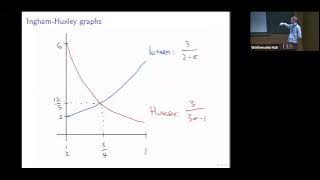Arithmetic | Numerical analysis | Data types | Computer arithmetic
Interval arithmetic
Interval arithmetic (also known as interval mathematics, interval analysis, or interval computation) is a mathematical technique used to put bounds on rounding errors and measurement errors in mathematical computation. Numerical methods using interval arithmetic can guarantee reliable and mathematically correct results. Instead of representing a value as a single number, interval arithmetic represents each value as a range of possibilities. For example, instead of saying the height of someone is approximately 2 meters, one could using interval arithmetic, say that the height of the person is definitely between 1.97 meters and 2.03 meters. Mathematically, using interval arithmetic, instead of working with an uncertain real-valued variable , one works with an interval that defines the range of values that can have. In other words, any value of the variable lies in the closed interval between and . A function , when applied to , yields an inexact value; instead produces an interval which includes all the possible values for for all . Interval arithmetic is suitable for a variety of purposes; the most common use is in scientific works, particularly when the calculations are handled by software, where it is used to keep track of rounding errors in calculations and of uncertainties in the knowledge of the exact values of physical and technical parameters. The latter often arise from measurement errors and tolerances for components or due to limits on computational accuracy. Interval arithmetic also helps find guaranteed solutions to equations (such as differential equations) and optimization problems. (Wikipedia).


















